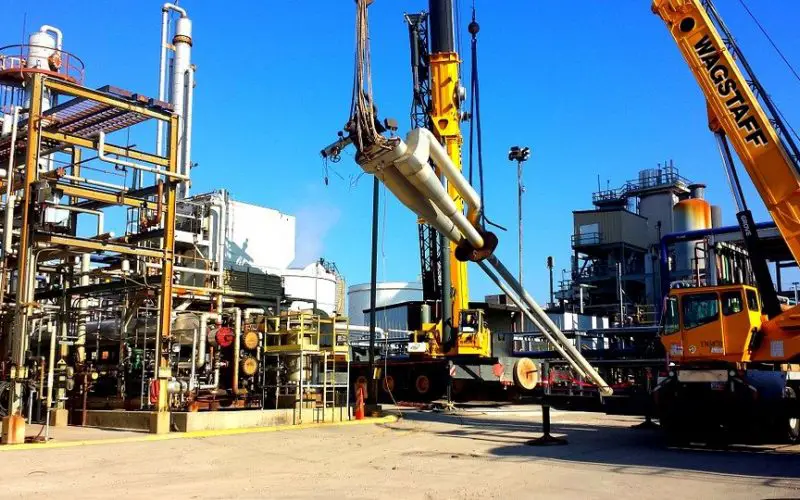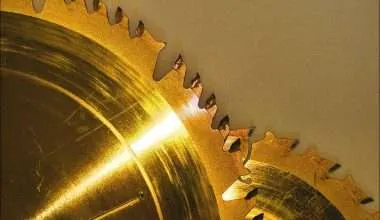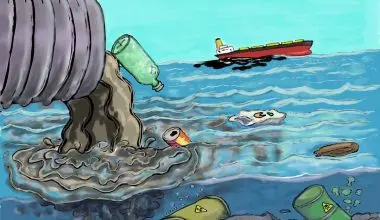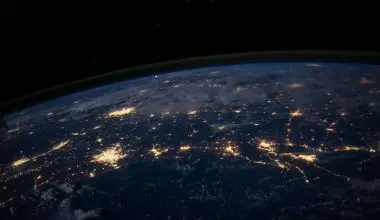Table of Contents Show
What is Hydrofracking?
Hydrofracking (also commonly referred to as hydraulic fracturing, frac’ing, hydrofracturing, and fraccing) is a technique employed to break large rocks into smaller pieces using pressurized liquid. The process mainly involves using high pressure liquid, also called “fracking fluid”.
This creates cracks in the deep rocks which makes extracting natural gas, petroleum, and brine much easier. Hydrofracking began in 1947 as a mere experiment but then quickly became successful for use in commercial purposes.
A few facts on Hydrofracking first…
As of 2012, more than 2.5 million frac jobs (Hydrofracking at a location) have been performed around the world, with United States being the primary contributor to this by carrying out over one million frac jobs by themselves.
The United States has particularly benefited from the introduction of hydrofracking, making it one of the major exporters of crude oil as of 2019. Hydrofracking has considerably reduced greenhouse gas emissions and helped in improvement of national economies and control oil prices for consumers.
Although hydrofracking has helped in improving national economy, reduced carbon dioxide emissions and replaced coal with natural gas, it still has a negative impact on the environment. This is especially due to the risks of ground- or surface-water pollution along with air and noise pollution. You should also read about the Dangerous chemicals used in Fracking.
Research suggests that long term hydrofracking may also lead to potential earthquakes.
Step-by-step Process of Hydrofracking
As stated by EPA, hydrofracking is a method that helps to stimulate maximum extraction of natural gas, oil, or geothermal energy from wells deep underneath the ground.
A fracture needs to be formed initially. This is done by pumping fracking fluid into a well-bore at a specific speed with slow increase in pressure once the target depth is reached. A fracture occurs once the fracture gradient (pressure gradient) of the rock is exceeded.
After the first crack, the high-pressure fluid flows through the crack and allows more fractures to be formed inside the rock (thereby breaking it even more).
Operators carrying out the process may choose to maintain the width of the fracture by using proppant in the injected fluid. This prevents the fracture from narrowing or closing once the stress by high-pressure fluid has been removed. The proppants are small solids (sand or ceramic-like) which ensure the well remains open once the pressure is removed.
The fracture in the rock is large enough to allow the extraction of gas, salt water, oil, and injecting fracking fluids into the well. It is necessary to control the fracturing fluid leak as this may result in matrix damage, changing geometry of fracture and adverse formation fluid interaction. All of these add up to reduce efficiency of the process.
Hydrofracking equipment being used in oil and natural gas fields consist of slurry blender, high pressure and high volume fracturing pumps as well as a monitoring unit. Other equipments also used in the process include fracturing tanks, multiple units of storage and handling of proppant, chemical additive units, low pressure flexible hoses, and many gauges and meters for determining the flow rate, pressure, and fluid density.
Before Going into further detail of advantages and disadvantages of Hydrofracking, Let me list them out in a table for you!
| Pros of Hydrofracking | Cons of Hydrofracking |
| More Efficient | Use of Harmful Chemicals |
| Readily Available | Contamination of groundwater |
| Increase in Domestic Reserves | Earthquakes |
| More Job Opportunities | More Dangerous to workers |
| Clean Fuel | Methane and Other pollutants |
| New Sources of Drinking Water | Silicon |
| Oil Spillage |
Advantages of Hydrofracking
More Efficient Energy
Hydrofracking has allowed us to access energy resources that were previously unavailable to use in tight oil, shale, and coal seam gas. By going deep into the surface, we are able to fracture rock formation where these energy resources are present so that they can be extracted and processed and ultimately used by us.
Conventionally, we used to break apart rocks superficially because the resources didn’t allow us to dig much deeper underground. However, fluid injection has allowed tight reserves to come into superficial layers and be extracted.
Readily Available Energy
Hydrofracking makes the energy reserves much easier to access. With easier access, the complexity and cost of the process are greatly reduced. Due to this, many households can save money on their cooling, heating, and transportation requirements over many years.
Increase in domestic shale rock reserves
Hydrofracking has allowed domestic markets to prosper; giving them a better and more secure future without having to depend on foreign markets for oil supply. This has allowed local energy production to be domestically viable.
Job creation
Hydrofracking allows stable employment which provides good money to workers carrying out the process. These job opportunities have led to a better standard of living and helped boost the local economy by providing wages high enough to support families.
Utilizing clean fuel
The objective of hydrofracking is to provide the population with relatively clean fuel. Natural gas is one of the cleanest burning fuels currently available in the world out of those being extracted using hydrofracking. While drilling for oil or mining for coal has unwanted complications on the environment, hydrofracking does not make the same level of impurities making it relatively eco-friendly.
The emphasis on relative is because although hydrofracking is a cleaner way of obtaining fuel; it does have its negative consequences on the environment which we will discuss ahead. Furthermore, the end result of hydrofracking is obtaining non-renewable energy resources so it can never be as good as solar energy.
Provision of Drinking water
When hydrofracking is used to drill into the rocks, sometimes that drilling can touch an underground water-source. This water source can be used to revitalize wells that once used to provide drinking water to the locals. The process of using that water is very safe and secure if proper precautions are followed by the workers.
Although hydrofracking has enormous effects on water used for the process, that water can be revitalized for irrigation purposes. All you need is a proper wastewater management system to adequately purify the water and proper precautions need to be followed by workers to ensure minimal release of toxins into the water.
Disadvantages of Hydrofracking
Use of Harmful Chemicals
The main products being used in hydrofracking are water and sand. However, other chemicals are also employed in the process of hydrofracking which can then mix with water stopping it from being used again for other purposes.
If these chemicals are exposed on the surface, they may harm the soil and potentially make it infertile for the growth of plants and habitats. The chemical runoff must also be controlled so that it doesn’t runoff into potential lakes and pollute them as well.
Additionally, flammable chemicals can also be released and could lead to wildfires.
Contamination of groundwater supply
Ground water flows above many deep rock formations on which hydrofracking occurs. The problem is the rocks which are the primary source of energy are under that water body. Sometimes, it is likely that the ground water supply is accessed before the rocks can be accessed meaning that the chemicals being used and produced by hydrofracking can get into the ground water channels and potentially contaminate it.
Wells that are providing fresh water usually use this ground water as the source of water. This means that if the ground water does get contaminated by hydrofracking, the well may become a source of contamination for locals in the area.
Earthquakes
The use of flow-back and brine in hydrofracking can activate fault lines, which in turn, creates localized earthquakes that can destabilize the region for some time. Hydrofracking is known for stimulating long-dormant faults that are then re-discovered due to the high pressure introduced into the deep rock formations to fracture them.
Added level of Danger to Workers
It is no doubt that hydrofracking is providing people with good-paying jobs, but if the workers are not careful or if anything goes wrong, a lot of injuries can occur. The wells are being operated at high pressure and always carry the risk of exploding.
Grave injuries may occur due to outburst of metals from pipes and connectors travelling at high speeds. The impact of this debris can be strong enough to kill a worker if struck on the head, God Forbid! Sometimes the impact may not be fatal but be traumatic enough to cause permanent disabilities.
Methane and other pollutants
In most cases, methane gas is a by-product of hydrofracking operations. Along with methane, various other pollutants are released from hydrofracking that have an environmental impact and contribute to global warming.
Silicon
Workers on-site handle many chemicals and toxic substances, one of those is sand. Sand contains silica particles which the workers may breathe in. Prolonged exposure of silica can potentially cause silicosis which is lung fibrosis.
Thus, it is necessary to provide workers with proper equipment that protects them from inhaling or coming into contact with toxic and irritant substances. The blood levels of the workers should also be monitored frequently to ensure optimum worker health.
Oil Spillage
There are many cases of oil spillage reported while carrying out hydrofracking operations. These oil spillage have a negative impact on the environment. Nearby wildlife can also be affected if they possibly end up drinking this water. Many accidental fires can also occur due to oil spillage.
Other Effects of Hydrofracking
Unexplored opportunities
Since the invention of hydrofracking, more and more previously unavailable gas and oil extraction opportunities have opened up. This opening up of unconventional “tight gas” formation for exploration and production has helped United States to greatly increase the estimates of recoverable shale gas reserves.
It is only with the development of horizontal drilling and the perfecting of hydrofracking that has allowed the opening of vast natural gas reserves which were previously unobtainable as they were locked within tight shale formations. More and more of these portions of resources have been converted into proven reserves that can now be extracted for economic benefits.
Now let me show you some of the Negative Effects of Hydrofracking.
Water Overuse and Contamination
Hydrofracking raises some issues as well, mostly concerning overuse of water and water contamination. It is well known that a large amount of water is required to carry out hydrofracking. The large sums of water are pulled from lakes and rivers which has very negative ecological consequences.
Apart from large volumes of water being used, hydrofracking also tends to contaminate ground water and surface water because of chemicals along with other naturally-occurring radioactive material, liquid hydrocarbons, brine water, and heavy metals.
The ground water also becomes contaminated by the fissures created by the fracking process allowing pathways for gas, chemicals, radioactive materials to flow through and cause further groundwater contamination. Various chemicals of hydrofracking such as the fracturing fluid and proppant are added into the water which prevents it from ever being used again.
Oil Spills and Soil Damage
It is also alarming that not all of the extracted oil is effectively stored as some of the oil may spill and cause contamination of nearby areas. The soil has also reported becoming tainted from the chemicals being used in hydrofracking.
Could potentially cause Earthquakes
As there is deep-well drilling of oil and gas, earthquakes can also arise due to hydrofracking. Many scientists are against hydrofracking as they believe pumping liquid underground could cause fractures in the earth’s crust thereby inducing seismic activity. Although most of the earthquakes are small in magnitudes, they are nevertheless a concern.
Toxic Chemicals used in Hydrofracking
There is concern among many of the potential health risks concerning hydrofracking as well. The chemicals mostly used are toxic in nature. Although they don’t pose an immediate life threatening impact on the health, its long term exposure and build up in the body can lead to serious health complications in future.






